Picnics and sandwiches go hand in hand. After all, nothing is more portable than your favorite fillings between bread.
However, one of the greatest picnic conundrums is how to prevent sandwiches from getting soggy.

Jump to:
These are just some of my great picnic tips to help keep your sandwiches fresh and avoid soggy sandwich syndrome, no matter what style of picnic sandwich you favor.
How to Stop Sandwiches Going Soggy
Make Your Sandwich at the Last Possible Moment.
The least amount of time your sandwich is a sandwich, the better. There are exceptions to this rule, such as the pressed sandwich (which features in various incarnations in my summer sandwich and fall sandwich editions).
Also, a thick, crusty baguette that languishes well with its fillings without falling victim to a soggy bottom. See my best baguette sandwich recipes for inspiration.

But for your average sandwich, try to minimize the amount of time in storage as much as possible. If you must make sandwiches the night before, wrap them well and store them in an airtight container in the fridge to avoid any condensation issues.
Construct Your Sandwiches In Situ
At the risk of stating the obvious, the most foolproof way to prevent soggy sandwiches is to pack your fillings and bread separately and make your sandwich as you are ready to eat. My Chicken Waldorf Salad sandwich is a great contender for this.

DIY sandwich platters are also a fabulous way to make group picnic sandwiches. Put out platters and containers of fillings with your bread of choice, and let everyone DIY their sandwich. It’s easier than making a load of sandwiches, allows everyone to make it the way they like, and you won’t suffer soggy sandwich issues.
Or, you can partially build your sandwiches with dry fillings and add wet fillings such as tomato, egg, tuna, or chicken salads at the last minute.
Sustainable Picnic Sandwich Wraps
Choose The Right Bread
If you must pre-make your sandwiches, choosing robust bread over traditional store-bought sliced bread will help sandwiches stand up to some transit time without becoming soggy.
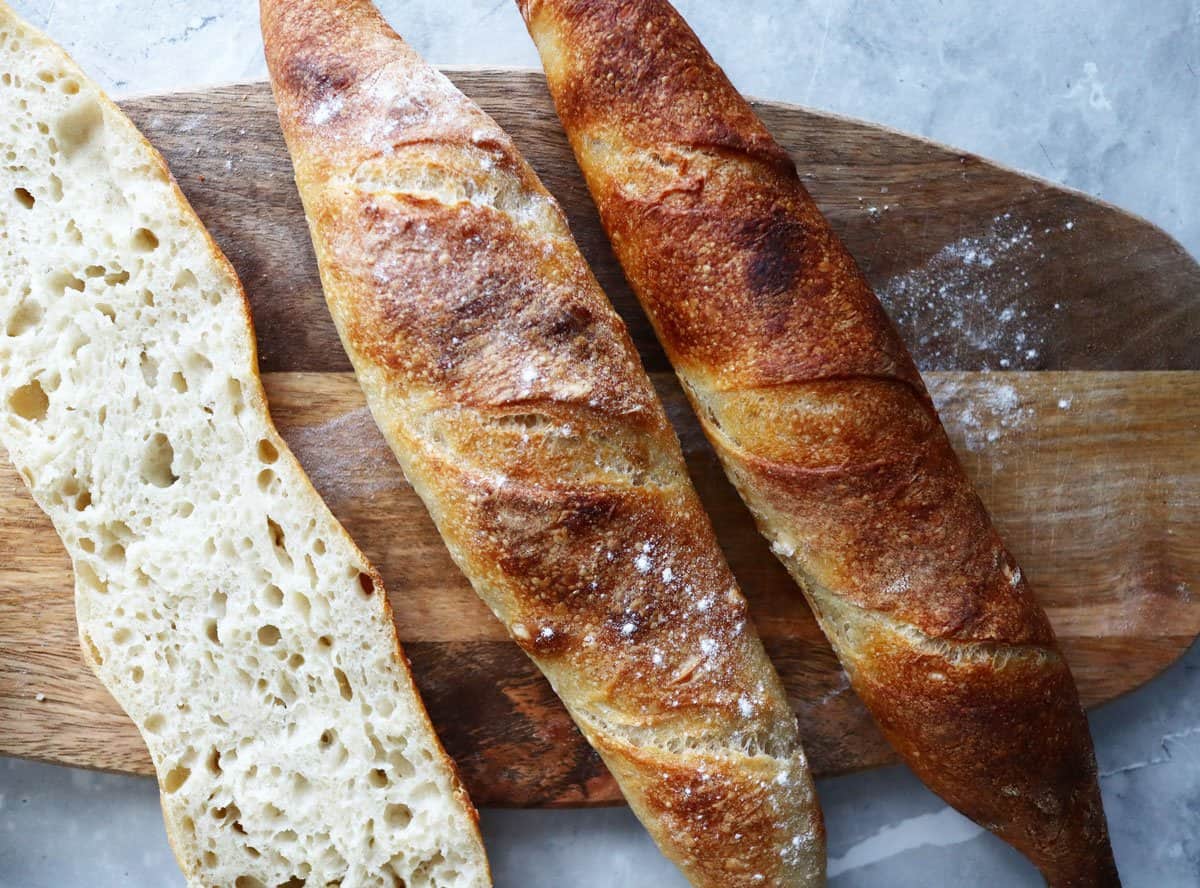
Opt for rye or sourdough, crusty baguettes, rolls, ciabatta, or bagels – bread that will hold up over long periods even with moist fillings like my Mediterranean Veggie Sandwich.
Like a dense, crusty baguette, some bread will do well soaking up the flavors of wet fillings without losing the crusty outer crunch.
Toast the Bread
I’m of two minds about this, and while it has merit, it is a preference thing. If you like toasted bread, toast away. Drying the bread through toasting will help prevent any sogginess and give your sandwich a different spin with a crisp texture.
If you don’t like toasted bread, only toast lightly. You could also opt for properly toasted sandwiches and wrap them in foil to keep them warm.

If I adopt the toasting method for certain sandwiches, think BLT, for example, I would only toast the inner side of the bread on a pan or griddle as you might for a hamburger bun. Or, opt for a classic Chicken Club Sandwich, which calls for toasted bread.
Doing it this way prevents sogginess, leaving the outer soft and fluffy or with the original crunch, depending on the bread you choose.
Forget Bread All Together
You don’t need bread to make a sandwich – Well, yes, traditionally, a sandwich is two pieces of bread with a filling. However, other ways exist to bundle your favorite sandwich fillings into a portable meal.

Look to hearty, sturdy, and pliable greens such as kale, chard, or collard leaves to use as a wrap alternative.
The large, sturdy leaves make great wraps, are a colorful way to serve your favorite sandwich fillings, and are healthy. Think of them as a sandwich-style summer spring roll. They’ll also never go soggy on you.
Not convinced about using robust green leaves as a bread alternative to combat soggy sandwich syndrome, look to the tortilla. Use a large, soft flour or corn tortilla as a sandwich wrap. Tortillas stand up to moisture much better than bread and are a portable way to serve sandwiches.
Serve them whole or cut them down into pinwheel style for finger sandwiches. These raw veggie wraps are a perfect example of a lunch option that will never go soggy.
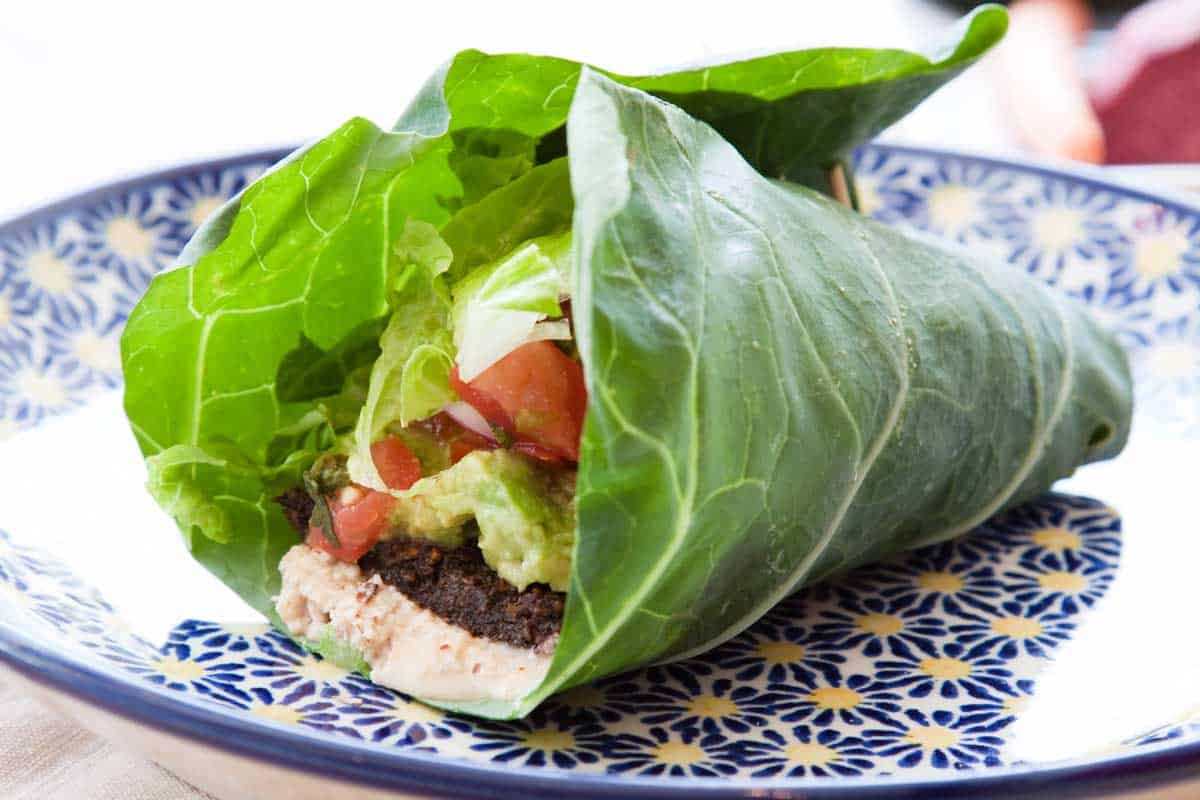
Use firm vegetables as an outer casing, such as cucumber slices, bell peppers, or grilled sweet potato. Load portobello mushrooms with your favorite fillings, or turn to tofu or polenta cakes for a bread alternative. I’ve got loads of ideas for delicious no-bread sandwiches here.
Use Dry Sandwich Fillings
No one likes a dry sandwich, but there are ways to avoid soggy sandwiches by keeping wet fillings to a minimum.
Tomatoes are probably the worst offenders when making sandwich bread wet and soggy. You can avoid tomatoes altogether or pack them separately and add them when ready to eat. Placing them towards the middle of the sandwich between other layers can also help.
Swap tomatoes for roasted red peppers. Just pat dry with a paper towel before adding them, and keep them in the sandwich’s center.
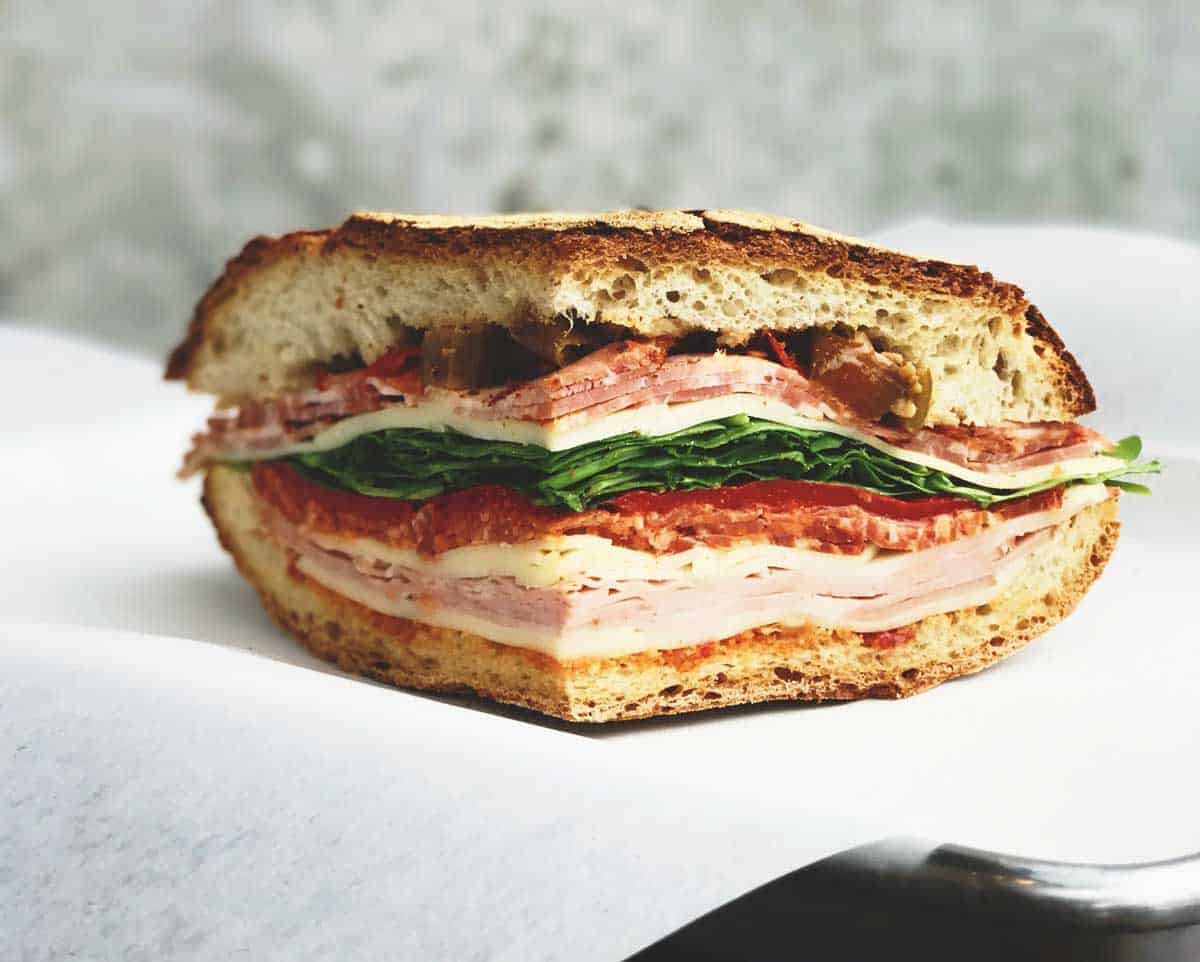
Alternately, try sun or semi-dried tomatoes instead. They will give a nice flavor boost to your sandwich and never cause sogginess.
If using lettuce, ensure it is completely dry after rinsing before adding to the sandwich. Pat with a paper towel after using a salad spinner to make sure all excess water is removed.
Wet fillings such as egg or chicken salad are always best added at the last minute. Otherwise, consider a protective layer such as lettuce between the salad and bread.
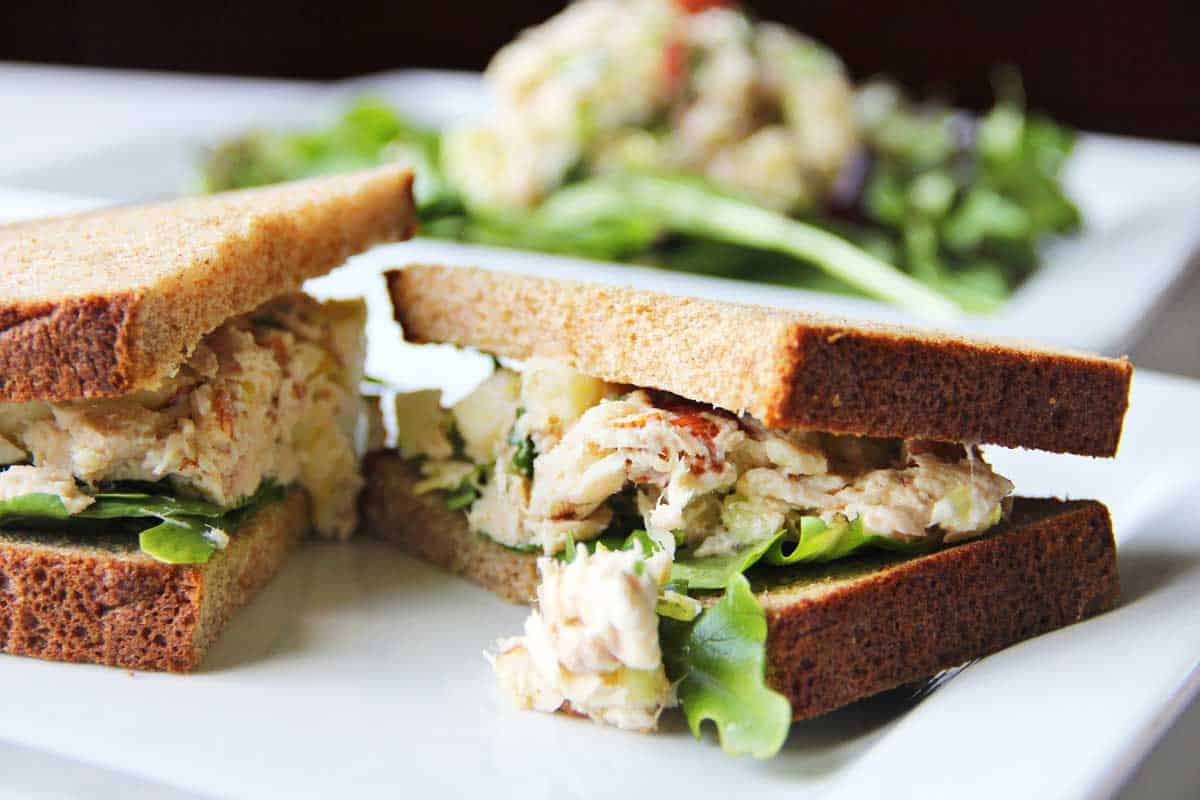
If adding condiments such as mayonnaise or pickles, consider adding them just before eating or spreading them between slices of meat and cheese away from the bread.
More on the condiment conundrum further on.
Avoid Hot or Warm Sandwich Fillings
If you have cooked sandwich fillings such as chicken, egg, bacon, or roasted veg, let them completely cool before adding them unless you intend to have a hot sandwich such as a hot roast chicken roll.
Then, fill your bread with steaming hot chicken and wrap it in foil to keep it hot. We give you all the tips for keeping picnic food warm here. I would also suggest the inner toast method here.
Adding warm ingredients to a sandwich will create condensation and, in turn, soggy bread. Always use cold or room-temperature ingredients.
Looking for Chicken Sandwich Inspiration? We’ve got chicken sandwich recipes here to suit every picnic occasion.
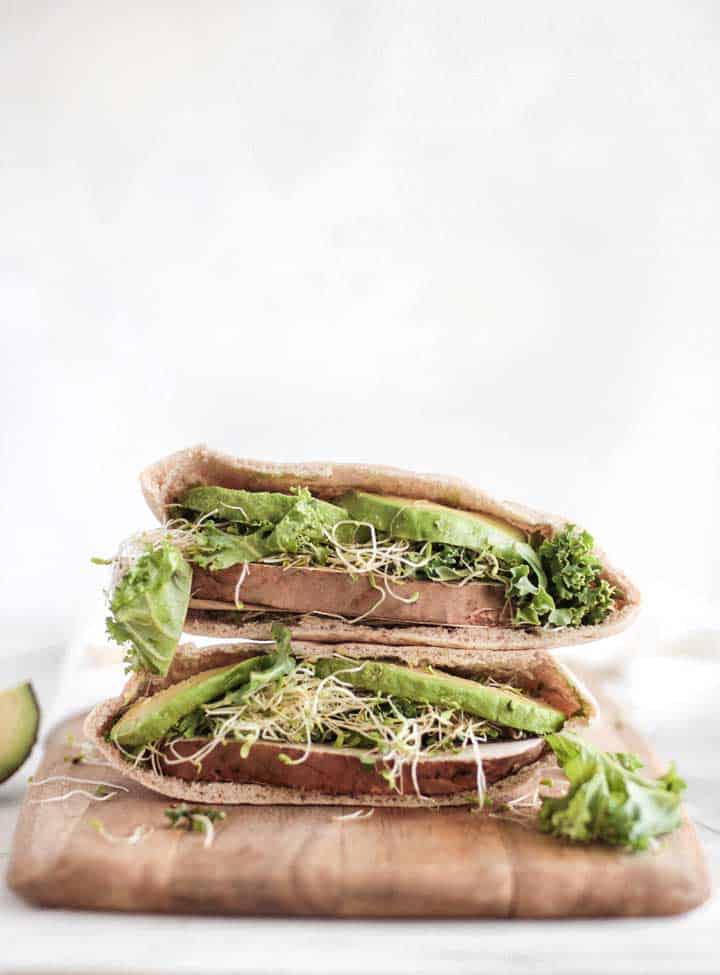
Condiments and Sandwich Construction Tips
This is a tricky one, as there are three schools of thought regarding condiments and soggy sandwiches.
- Some prefer to layer condiments between inner layers, such as cheese and meat slices, towards the sandwich’s middle. Doing this creates a moisture barrier between wet ingredients and the bread.
- Other cautious sandwich makers like to pack condiments separately and add them at the last minute.
- Then, there are the sandwich thrill-seekers who believe a hefty layer of condiment on the bread helps prevent sogginess.
I think this last theory is an extension of the butter and olive oil method. It is true, a layer of butter or even a thin brush of olive oil on the inside of the bread will create a moisture barrier and repel liquids from entering the bread. However, I don’t believe it is the same for wet chutneys, mayonnaise or even some mustards.
If you were to adopt this last method, I would advise doing so experimentally and with caution. While a thin layer of seeded mustard, pesto or even a thick slather of hummus may not cause sogginess, cranberry, pickles, relish or bbq sauce may result in a soggy mess.
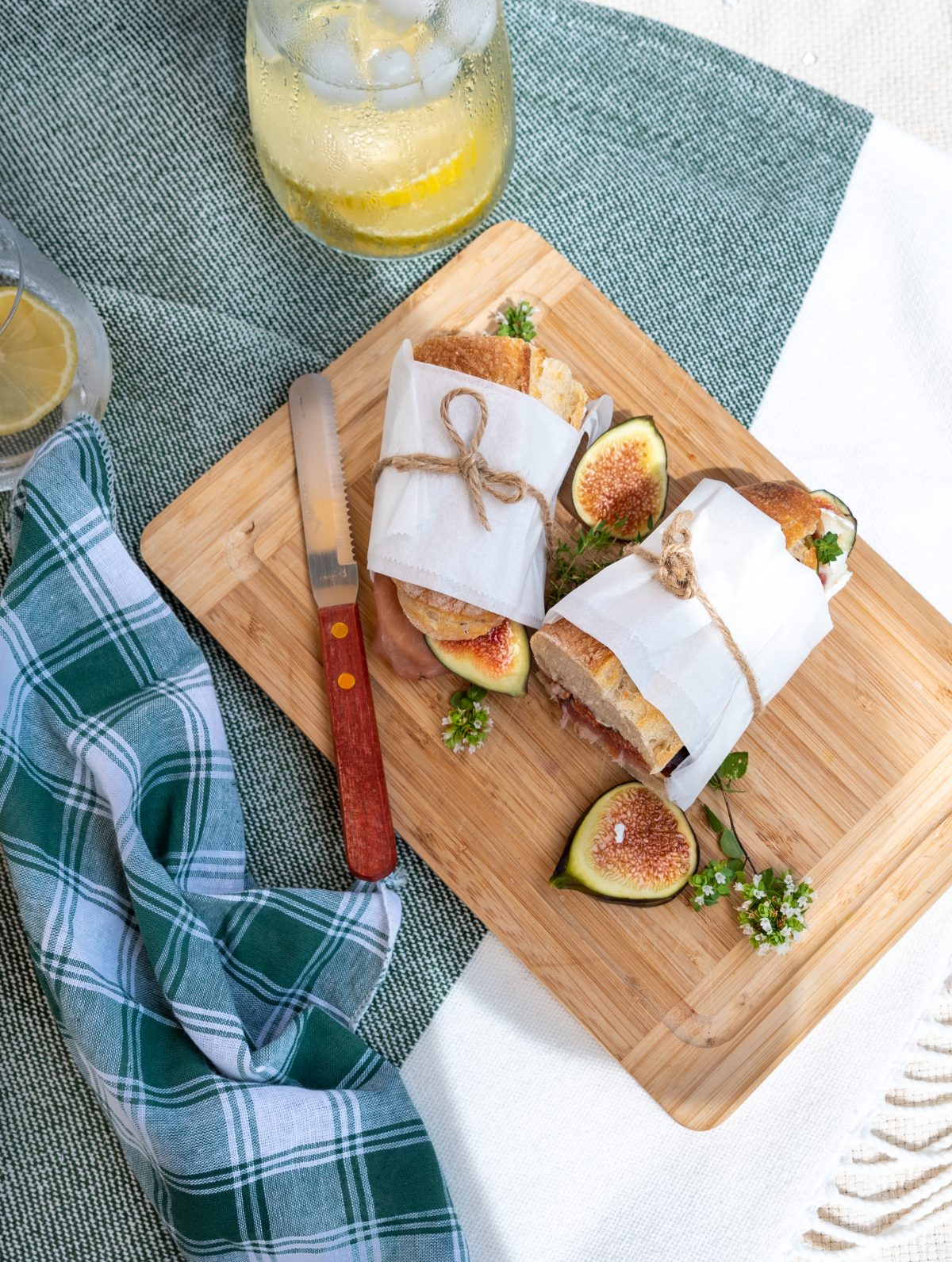
Pack Your Sandwiches Well
Last but not least, make sure your sandwiches are packed well. Use ziplock bags and airtight containers if packing on ice to avoid wetness or condensation creeping in.
Use natural sandwich wraps such as reusable beeswax wrappers or paper to avoid sandwich sweat, which can happen with cling wrap. Keep sandwiches cold, but don’t store them against ice bricks or ice packs. And most of all, don’t go to all the trouble of keeping your sandwiches from getting soggy and allow them to get squashed.







Leave a Reply